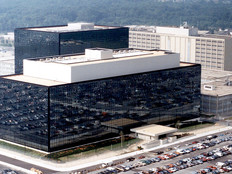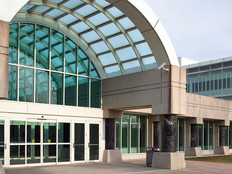Intelligence Community Sees a Surge in Cloud Use
It has been four years since the U.S. intelligence community started using commercial cloud services to process classified information. At first, the goal was just to get intelligence analysts to put data into the cloud. “Now, we can’t keep people from putting data in the cloud,” says Sue Gordon, principal deputy director of national intelligence.
Gordon, speaking Aug. 21 at the FedTalks 2018 event in Washington, D.C., said that the intelligence community, under the direction of the Office of the Director of National Intelligence, has made great strides in its use of the cloud and is now moving to more sophisticated issues related to its cloud deployment.
For example, the intelligence community is still sorting through metatagging issues and how much data will be tagged by machines as opposed to humans. That feeds into the IC’s goal of “getting the right data to the right people at the right time,” Gordon said. Meanwhile, the intelligence community is still trying to figure out how it can enable members of the IC to get secure access to the cloud at the network edge, according to Gordon.
Intelligence Community Sees Massive Shift to the Cloud
About six years ago, the IC moved away from siloed IT and established the Intelligence Community Information Technology Enterprise. ODNI’s ICITE is a platform of nine shared services, from security to networking, email to virtual desktops, all delivered via a private cloud.
Gordon praised her predecessors who set up ICITE and “who started with the idea of efficiency — that we should do in common what’s commonly done.” ICITE “allows integration in a serious way,” she said.
Around that time, the IC was trying to overcome cultural impediments to cloud migration, and to get users to simply put classified data into the private on-premises cloud, which was built by Amazon Web Services. Gordon said, “the cost of getting to the cloud was borne by people who didn’t immediately benefit from it.” Back then, she added, “we didn’t envision the explosion of use.” Now, Gordon said, “we need to work on getting them easy access to it. We didn’t focus on demand when we were focused on getting people there.”
Today, the IC is focused on what intelligence analysts and other IC workers can do with the data.
“Putting data in is cool, but if you can’t pull at the data in action then you can’t do anything with it,” Gordon said. The IC is becoming much more data-centric and wants to also enable more sophisticated tagging, because “tagging allows you to put data to work. Data is the whole game.”
When the IC started its cloud migration, leaders thought that all of the data-tagging work would be done by humans. Now, Gordon said, she is thinking about how to use machines tag data automatically. How that will be done and how data with those metatags will be used is still something the IC is working on, according to Gordon.
Cloud Security Is Still a Concern in the IC
Data security sits at the heart of the IC’s technology efforts. “If you’re in the intelligence community, you know we are living in a constant struggle of protecting information and sharing information,” Gordon said.
In the digital and connected world of 2018, Gordon said, it is critical to protect the sources and methods of intelligence. Identity, credential and access management is fundamental to that. “Having trust in that is critical to operate at reach and at speed,” Gordon said.
The IC also wants to be able to extend the cloud to the network edge, away from agencies’ headquarters and out in the field. “Because we are a worldwide business, we need the same performance wherever we are,” Gordon said.
Intelligence agencies can perform computing and analysis at the edge now, Gordon said. The biggest hurdle is securing the cloud at the edge.
“Can we have as much confidence there?” she said. “The performance will let us move there. Security will be the piece that is most deterministic of how far we can go.”









